Nest vs Ring – Doorbell, camera and security compared
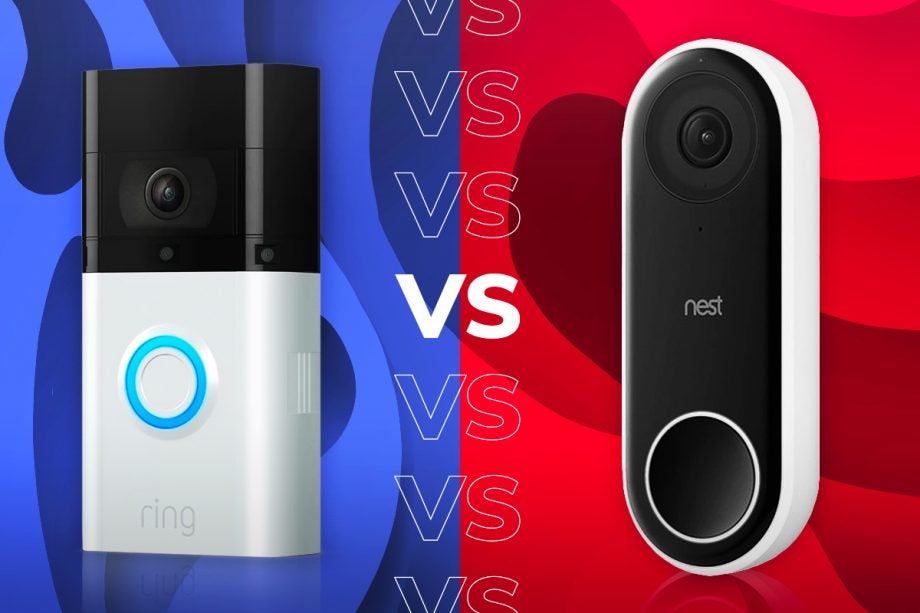
Buying a smart doorbell and security cameras isn’t just about the individual quality of each. It’s as much about the ecosystem: how much cloud storage costs, the range of products and how the system interacts with your other smart home devices.
Here, I’ll compare Nest vs Ring: two of the biggest smart security companies. I’ll take you through the options available (doorbells, camera and security systems) plus how the two stack up technology-wise.
Doorbell range
As the original manufacturer of smart doorbells, it’s no surprise that Ring has a wider choice of products. It currently sells seven models – of these, the main products are the Ring Video Doorbell Wired, Ring Video Doorbell 4 (battery-powered) and the Ring Video Doorbell Pro 2 (also wired). Ranging from £49 to £219, you’ll struggle to find better value doorbells from a major manufacturer.
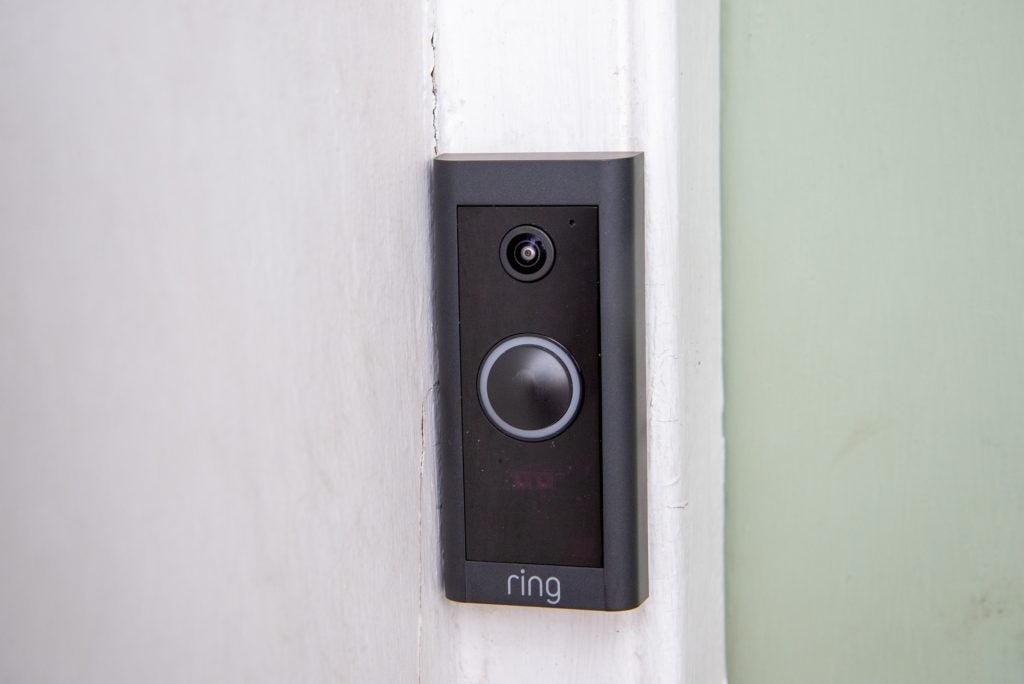
The difference in the range comes down to features. I’ll cover the basics here, but check out the features section below to see more details. The basic Doorbell Wired (£49) has to be permanently wired into place, which you can use a standard transformer for (if you have one) or use the optional Ring plug-in adaptor, which connects to a plug. You get standard notifications, customisable activity zones for motion and Full HD video.
With the Ring Video Doorbell 4 (£79), you get a battery-powered model (no wires needed), although you can wire it to your existing doorbell circuit if you’d prefer to have it permanently powered. Motion detection is based on activity zones and you get Full HD video.
The Ring Video Doorbell Pro 2 (£219) is the company’s top-of-the-line wired doorbell, which has higher resolution video (1536 x 1536) plus the new 3D Motion Detection feature, which uses radar alongside activity zones to cut down on alerts.
The other products in the line-up are basically older editions, available at a range of prices and the main ones I’ve listed cover most uses. The standard Ring Video Doorbell (2nd Generation) costs just £89 and gives you the basics for a battery-powered doorbell, although I think the Doorbell 4 is worth the extra cash.
Nest is far more limited in its choice. It has just two doorbells: the Nest Doorbell (wired), which costs £229 and was previously called the Nest Hello, and the Nest Doorbell (battery), which costs £179. It’s clear what the main differences are here, although the Doorbell (wired) has higher resolution video, and the feature set is a little more nuanced – more of that later.

In terms of options, though, it’s clear that Ring is generally the winner here, with a more varied line-up to suit all budgets and needs.
Design and installation
Nest has gone for a curved, lozenge-shaped design for its video doorbells. The Doorbell (battery) is the larger product, thanks to its integrated battery, although both should fit on a standard door frame without too much trouble.
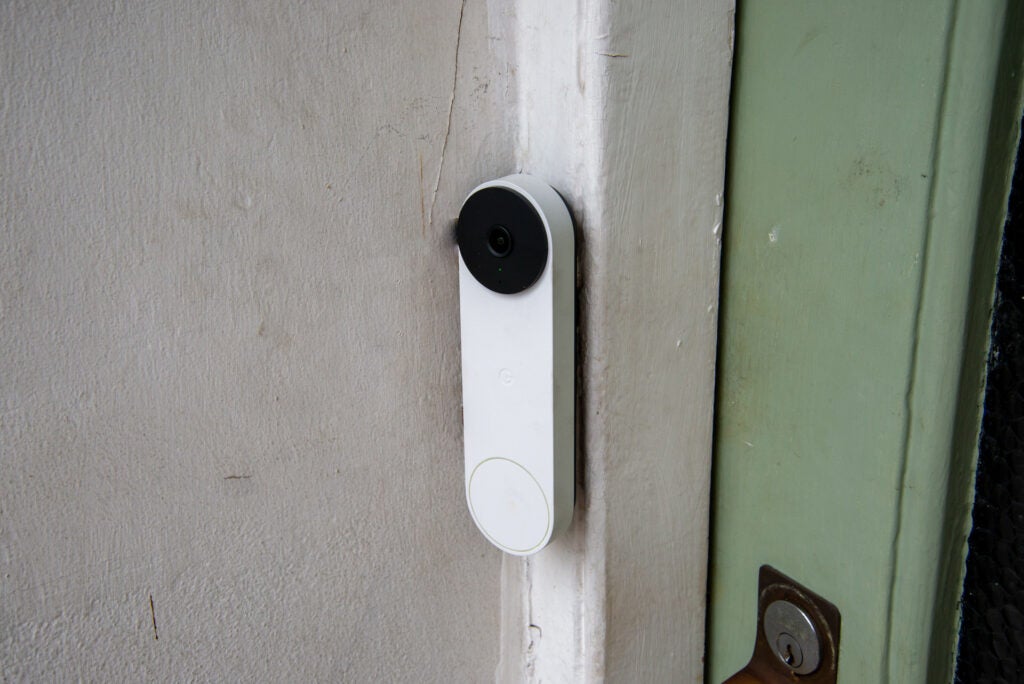
Ring’s doorbells are a little more chunky, the battery-powered models in particular. In fact, they’re generally so wide that I have trouble fitting them next to my door and have to use the provided wedge.
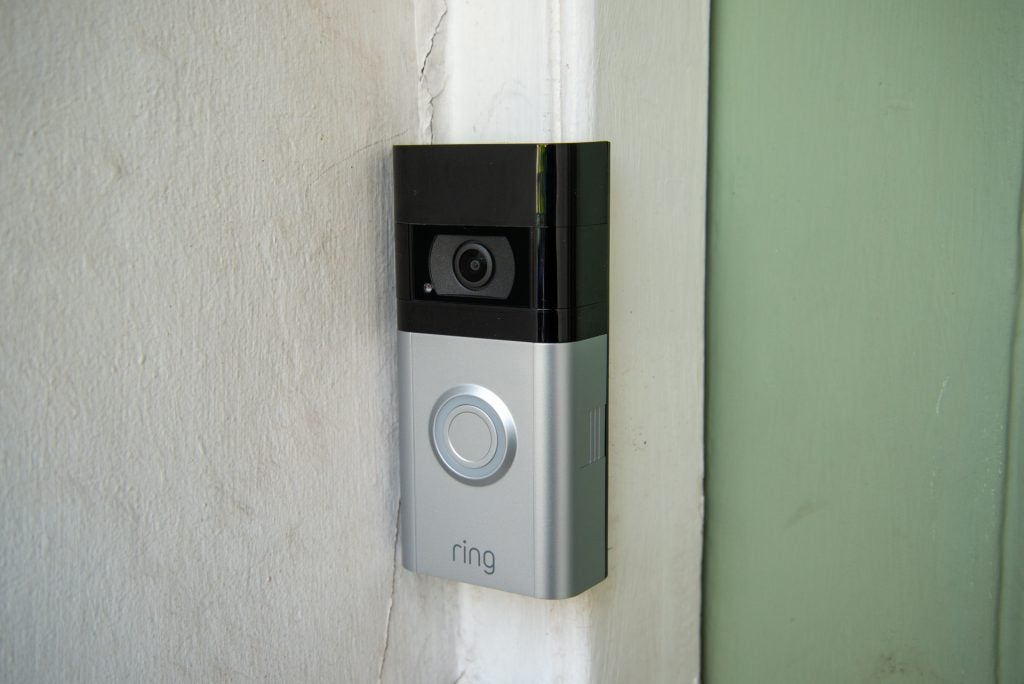
Still, Ring’s battery-powered products have a major advantage: the battery is removable, so you can pull it out and either charge or swap for a new product without having to remove the entire doorbell. The Nest Doorbell (battery) has to be removed to be charged.
With the Ring wired doorbells, that’s not so much of a problem, as they’re thinner and not as chunky. They do look a little bit more like a regular doorbell rather than a high-end bit of tech.
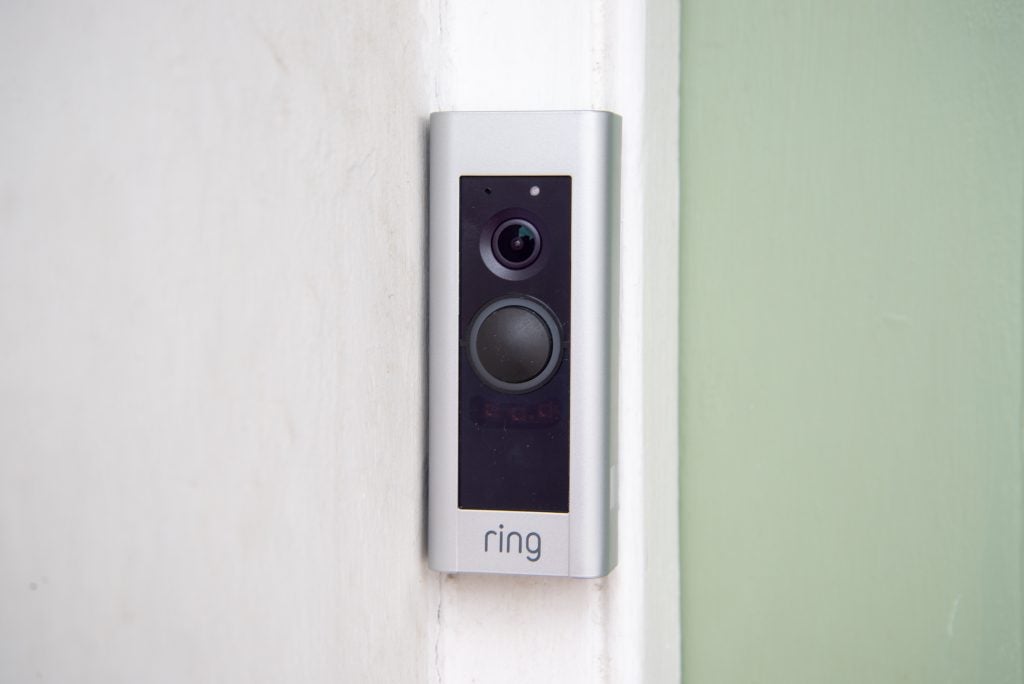
Installation of the battery-powered products is similar in both cases. You first fit the mounting bracket and then clip the doorbell into place, using the app to connect the devices to your home network.
For wiring in a product, how depends on what you buy. Both Ring and Nest’s battery-powered doorbells can be wired into place, with your existing doorbell circuit keeping the battery topped up. Both devices work with a huge range of transformers, so you probably don’t need to change your transformer, and the doorbells will sound your internal chime.
For the wired-only products, you need a more powerful transformer. Ring also has an optional plug-in adaptor that you can use in a traditional plug socket; for the Nest Doorbell (wired), you’ll most likely need a new transformer, which may require professional installation.
Ring’s most recent wired products are not compatible with standard wired chimes, but the Nest Doorbell (wired) is.
Ring has wireless chimes for sale (Nest does not). Ring can also send alerts via your Echo speakers, while Nest can do the same via Google Assistant smart speakers. In this day and age, then, having an internal chime isn’t necessarily a major requirement.
Largely, installation is similar for both. I prefer the wired models in both cases, as the doorbells are slimmer.
Camera range
Before we get into the feature comparison, it’s worth looking at the range of security cameras that are available, too. If you decide to get a cloud subscription, both companies will cover recording for all of your devices for one monthly fee, so it’s worth seeing what you want to add into the mix.
Nest has a smaller range, with the Nest Cam (outdoor or indoor, battery), which can also be powered permanently via the optional cable, the only available model at the moment. There will be an indoor wired camera and a floodlight camera with a security light available later in the year. This range should cover most needs, and prices start at £99 for the indoor model.
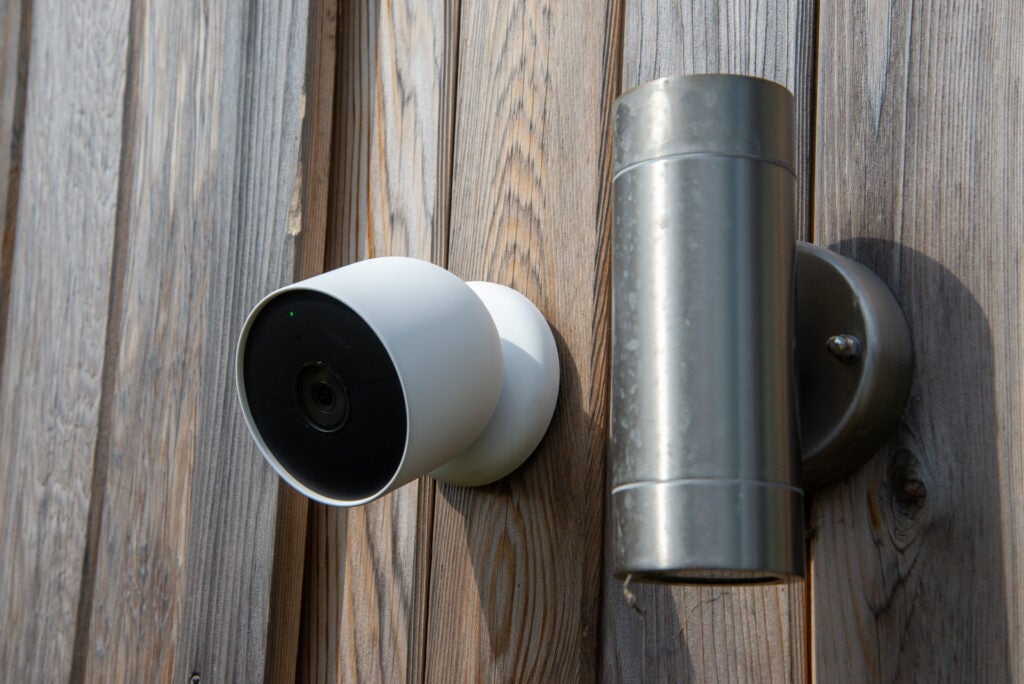
Ring has, once again, the largest range of cameras, and the greatest range of prices, starting with the Indoor Cam (£49). Ring’s range, including the Stick-up Cam and Floodlight Cam, which has a security light, are available in wired or battery-powered options. Each model has the same image quality, but the battery-powered products have slightly more basic motion detection.
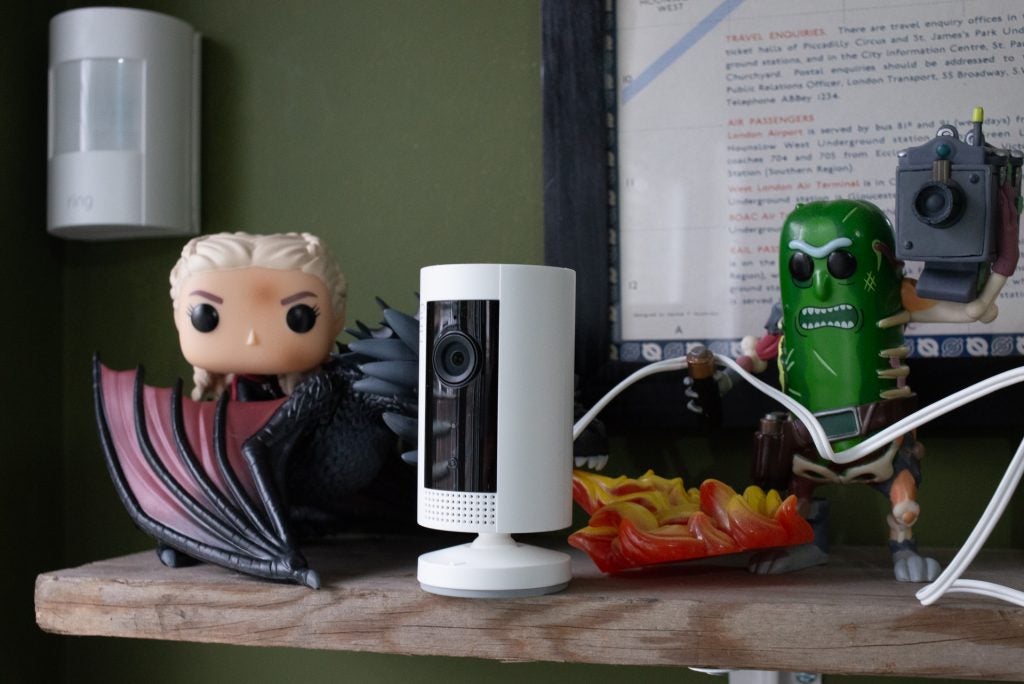
Overall, the range is quite similar, with both companies covering most needs, although Ring’s starting product is cheaper than Nest’s.
Alarm range
Nest used to have a security alarm but has discontinued it; the Ring Alarm (2nd Generation) is one of the best smart alarm systems available: it’s well priced and has a good range of features. The Ring Alarm, as I’ll explain, also integrates nicely with the security cameras and doorbells, giving you more features. As a complete system, then, Ring outpaces Nest.
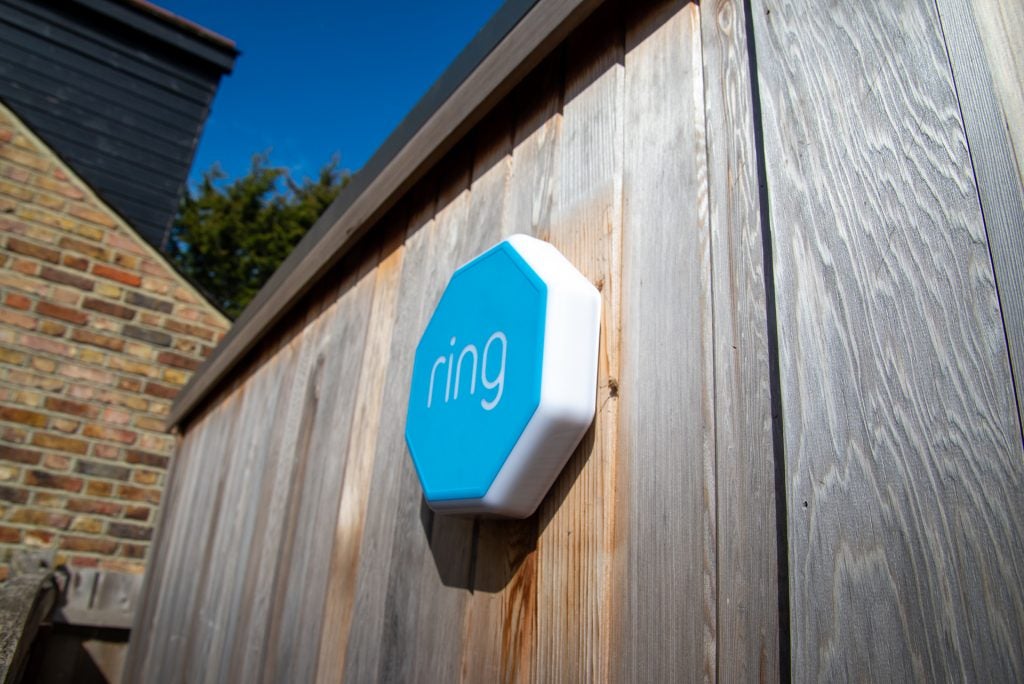
Features
How the cameras work and what they do is the most important thing. Both companies have their devices controlled via an app. For Ring, it’s the Ring app, which integrates everything into one place, giving you alarm controls at the top and then thumbnail previews of its cameras at the bottom.
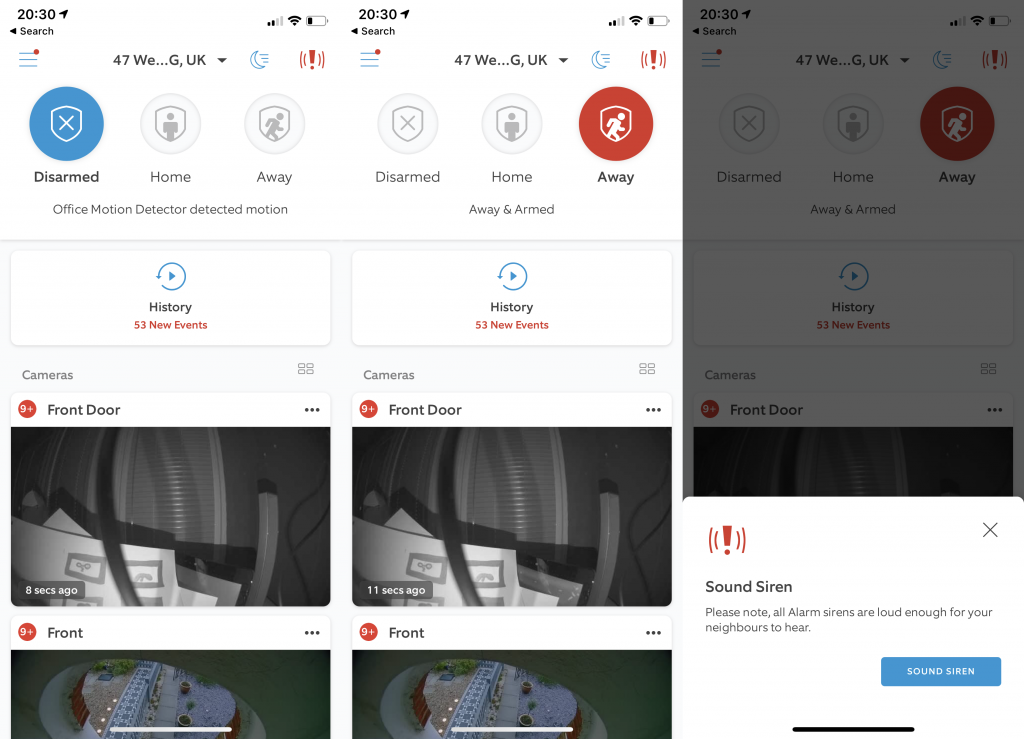
Nest is a bit more complicated. Older devices, including the Nest Doorbell (wired) are managed through the Nest app; new devices are managed through the Google Home app. It’s frustrating, as you may end up with devices in different apps.
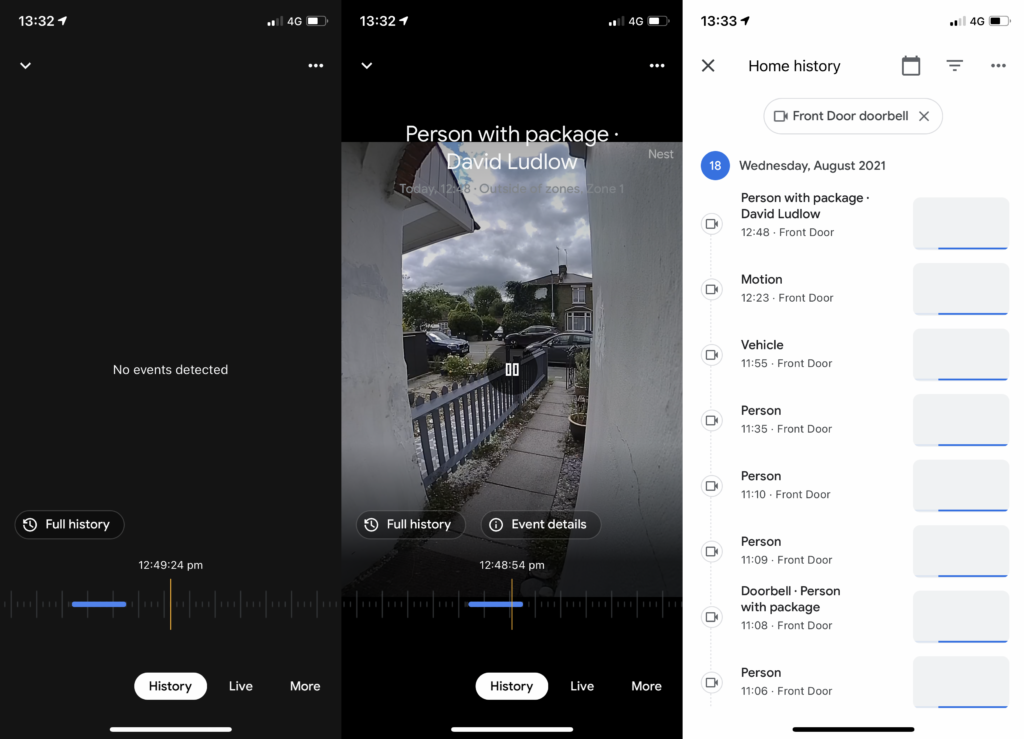
I don’t find the Google Home app as good as the Nest app, either, making it harder to find your cameras and doorbell, and more difficult to view footage from them.
With Ring, you can use all of your devices without a Ring Protect subscription, but you won’t get all of the features and you don’t get cloud recording. Without a subscription, you get motion notifications, doorbell presses and alarm notifications.
You can subscribe to Ring Protect for £2.50 a month to cover a single camera with 30-days of event history stored in the cloud. If you’ve got multiple devices, then Ring Protect Plus for £8 a month (or £80 a year) is well worth it.
This gets you 30-days of cloud recording for all devices in your home, plus you get cellular backup for your alarm system and assisted monitoring (if your alarm is triggered, you’ll get a phone call, which in practice is better than a simple alert that can be missed).
Here, it’s worth mentioning how the Alarm works with cameras. By setting modes (Home, Away and Disarmed), you can set how you want your cameras to work. So, you could have an indoor camera arming when you set the alarm for Home or Away mode, but disarming when you’re at home, so you don’t record yourself.
You can also link Ring devices, triggering one camera to record when another has detected motion. It’s this combination of power that makes the system so powerful.
Nest has more basic control, with Home and Away sensing letting you arm or disarm a camera; it’s less nuanced than Ring’s system.
Ring Protect also turns on advanced motion detection, so you can choose to be alerted about your choice of people only, packages or all motion. That’s on top of standard activity zones.
Ring’s new 3D Motion Detection, available on the Pro 2 doorbell, uses Radar to both help you limit where motion is detected (you can tell it to ignore motion outside of your garden), and to show you where an even started on a top-down map. It’s quite brilliant and is the most advanced motion detection system that I’ve used.
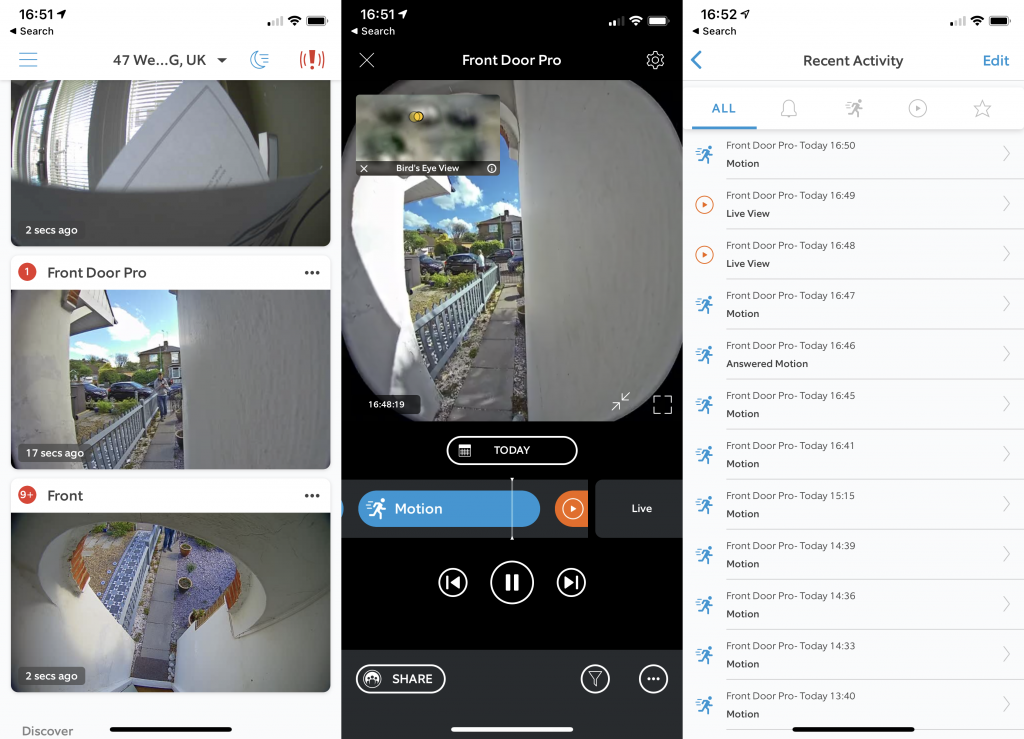
With Nest, it’s a bit more complicated. The new products (security cameras and Nest Doorbell (battery), can record up to three hours of video offline, they have activity zones as standard, and in-camera processing to detect and warn you about your choice of people, packages, animals and vehicles.
Upgrade to a Nest Aware subscription for £5 a month for the basic package, and you get 30-days of event history and facial recognition. The latter is an excellent feature, telling you who the camera or doorbell spotted.
Buy the more expensive Nest Aware subscription and any wired devices (bar the Doorbell (wired) when it’s connected to a transformer) get continuous 24/7 recording, so you’ll never miss an event.
Ring only has pre-roll on its cameras, which gives you a low-resolution video of what happened before an event was triggered.
With the Nest Doorbell (wired) and older cameras, you need Nest Aware to get object detection (people or packages), facial recognition, and any video recording at all. If you just buy newer Nest products, you can arguably get away without a subscription; older products require one to get the most out of them.
Both devices let you view clips and download them to your device. Nest makes this slightly easier to do, with a list of clips that have thumbnails. Ring needs to improve this part of its app, as its list of events has no thumbnails, and the standard timeline view is a little fiddly to navigate.
As Ring is owned by Amazon, it works with Alexa only. If you have Echo devices, your Ring doorbell can sound them when someone calls. For Echo Show owners, you can see a video preview of the caller and answer without touching your phone.
New (in the UK) is the option to send an automatic reply to callers, chosen from a list (‘we can’t answer the door’ and so on). The doorbell will then offer to record a message.
As Nest is owned by Google it works with Google Assistant only. If you have Google Assistant smart speakers, they’ll announce when someone is at the door. You can also answer using a video device, such as the Nest Hub.
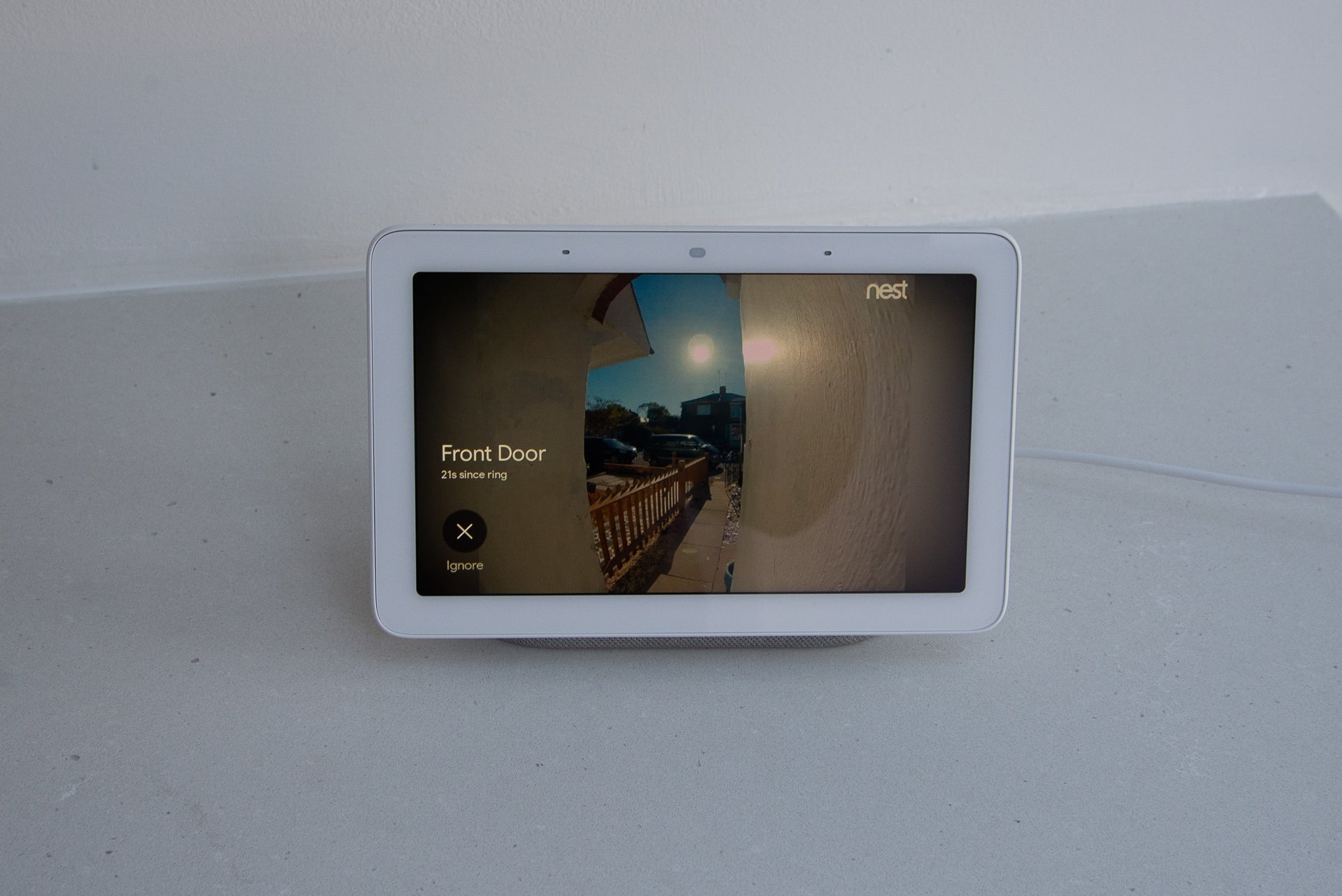
Google has quick replies, too, although you can select one at the time someone calls, either from your phone or smart display.
As neither company supports the rival voice assistant, which smart speakers you have in your home is likely to play a huge part in the system that you buy.
Overall, with the Ring Alarm, cameras and doorbell, Ring is a more accomplished system that works nicely together. Nest is more basic in its level of control, although you don’t necessarily need to pay for a cloud subscription with the newer products.
Video quality
Quality depends on the products that you buy. At the top of the pile is the Ring Video Doorbell Pro 2, which shoots at 1536 x 1536, delivering some of the best-quality video I’ve seen.

The rest of the Ring range (cameras and doorbells) shoots at a Full HD resolution. Quality is roughly the same across the range: sharp and detailed enough to see what’s going on.
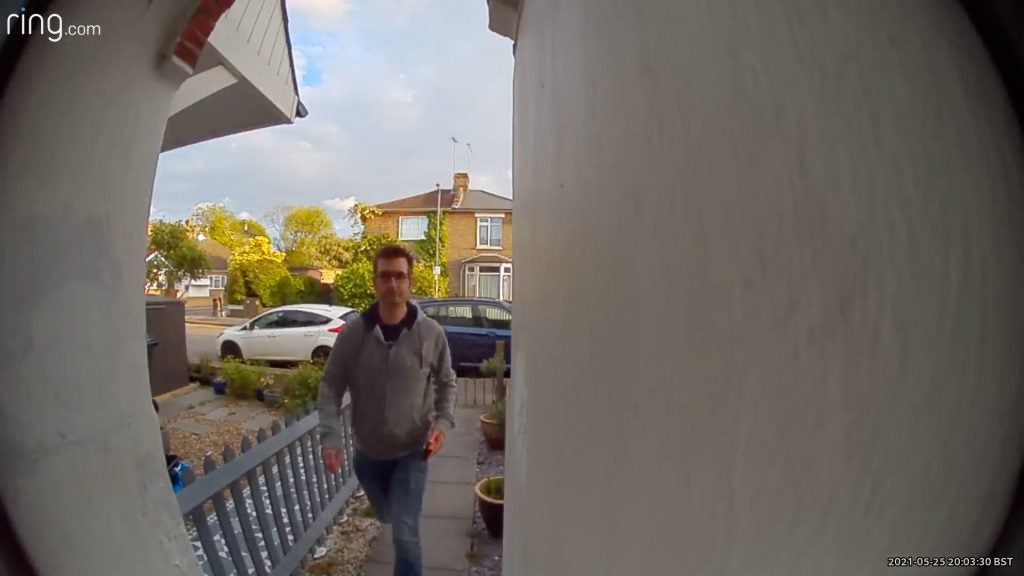
Ring uses IR lights at night to deliver video in black and white, although many products can shoot colour night vision: provided there’s enough light, you’ll get colour shots at night, with footage looking better than in IR-only mode.
Nest is a bit all over the place. The cameras shoot at 1080p, producing video that’s comparable to Ring’s cameras.
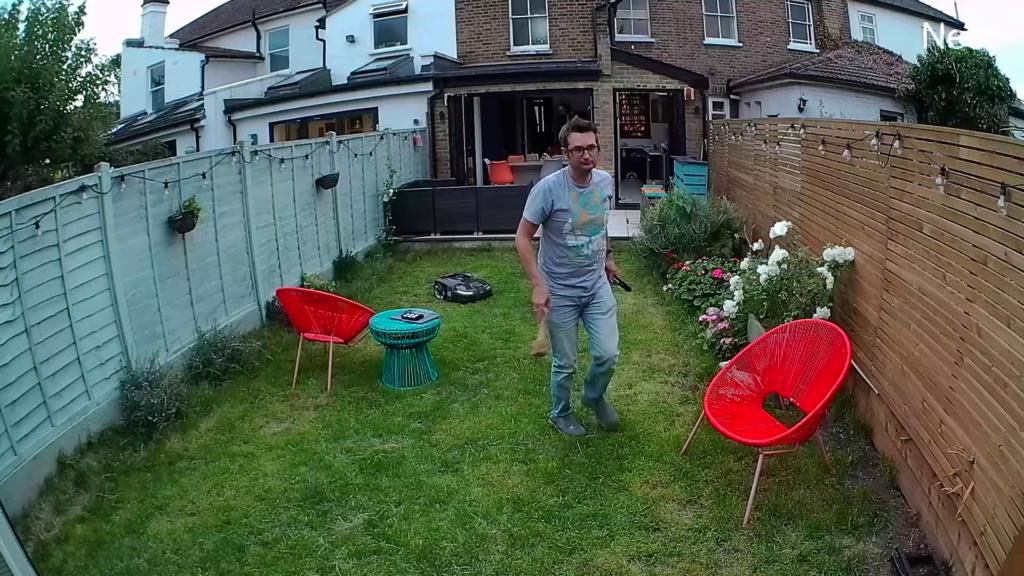
The doorbells are different. The Nest Doorbell (wired) shoots at 1600 x 1200, but the video is sharp and not too far behind that of Ring’s regular doorbells.

The Nest Doorbell (battery) shoots at just 960 x 1280 and its footage looks a lot more low resolution than the competition. It’s a little disappointing that such a new product doesn’t have a better image sensor.

At night, Nest’s cameras shoot in IR, producing black and white images that are a little softer than during the day.
Nest vs Ring – Which system is best?
As I said earlier, a lot of the choice comes down to the smart speakers you have: if you have Alexa then go for Ring; if you use the Google Assistant, go for Nest.
Outside of that, the choice is a bit harder. If you don’t want to pay for a subscription, then the newer Nest products are good, although the Nest Doorbell (battery) shoots low-resolution video.
Overall, Ring is the better choice. It has a wider choice of device with the Pro 2 the best wired doorbell that I’ve tested, and the alarm system adds an extra component, giving you finer control over how and when your cameras record.


